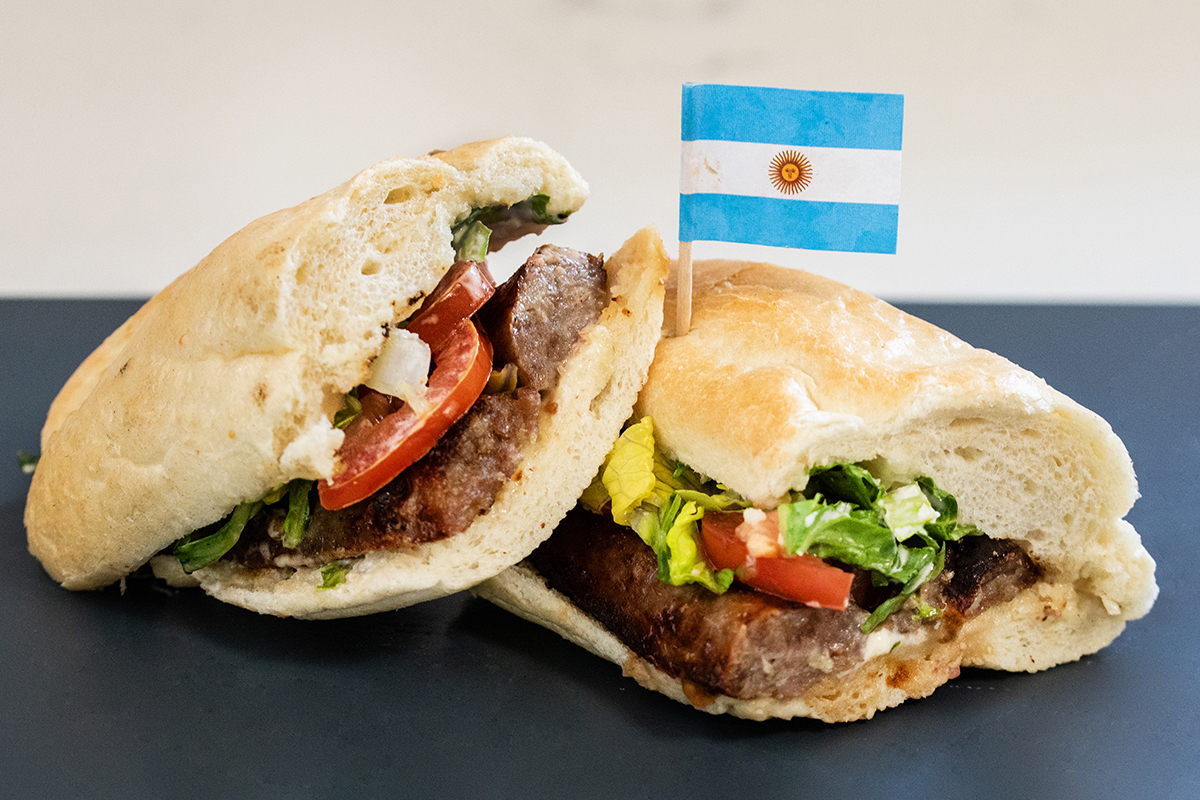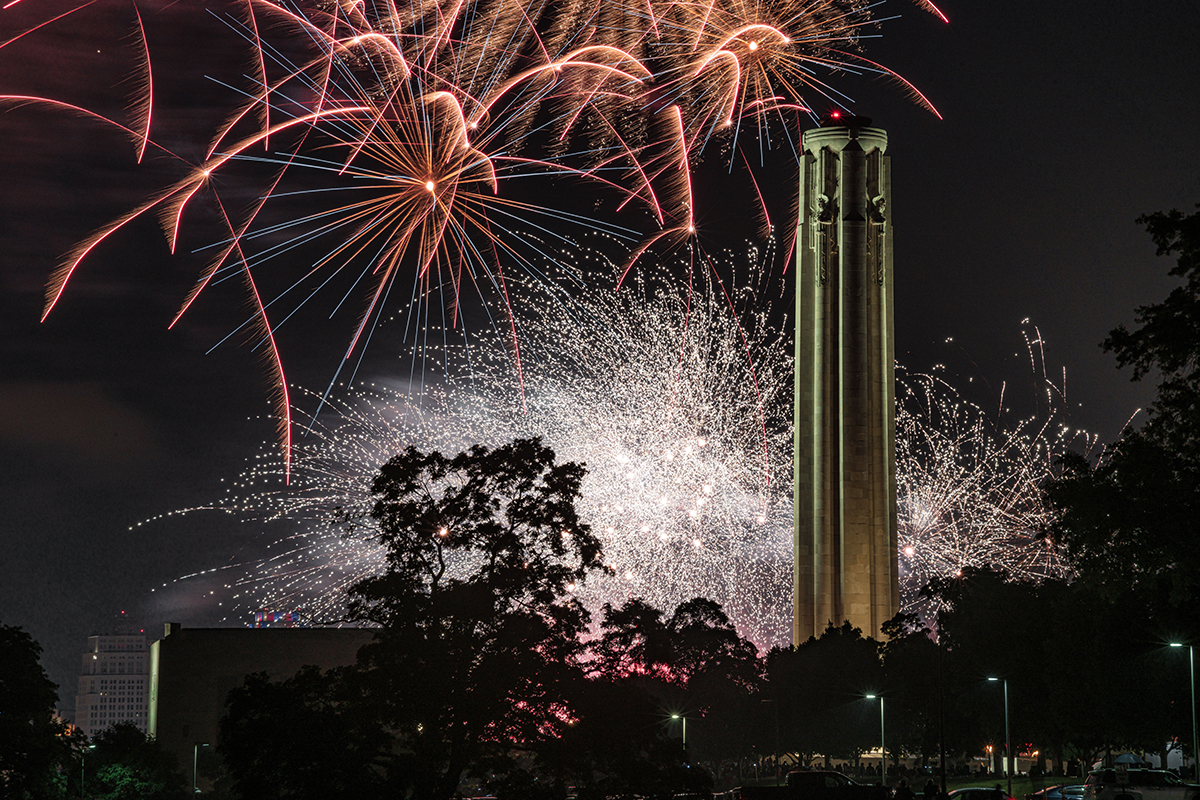In a matter of weeks, students in many areas of Kansas City will return to classrooms for the first time since the middle of March.
So many questions are being hotly debated right now.
Is it safe to return to school? Do the benefits outweigh the risks, especially for students who are disadvantaged at home? What’s the best and safest way to get students back into desk chairs?
Social media is rife with hot takes on the subject, with opinions often sharply divided by age and political belief. Even people without children or medical expertise are not shy about piping in on the subject.
What are teachers really thinking?
We wanted to know—to eavesdrop on the conversations happening in the virtual teacher’s lounge.
So we arranged for three Kansas City teachers to have a candid conversation about the upcoming year. We promised the teachers total anonymity—they didn’t even know the names of the others on the line. Two of the teachers came from Kansas districts, one from a Missouri district. Two of the teachers were female, one was male.
Here’s what they had to say about the dangers of passing time, their confidence in the administration, their worries about being scapegoated if things go awry and whether it’s possible to enforce mask-wearing among kids.
Kansas City magazine: What is the biggest fear that you have about the upcoming school year?
Teacher 1: I’m not fearful based on the information I’ve been given from the school district. To be honest with you, I personally prefer that we do meet in-person because the online thing that we had to do at the end of last school year was not very enjoyable. It seemed like it tripled the workload. I could cover so much more material by having them in a group setting and being able to coordinate things that way. So I look at it like a good defensive driver: I’m gonna be very cautious. I think the school district’s going to do a great job implementing plans. Will it completely prevent the spread of COVID? No, I don’t think so. But I’m going to be a defensive person in making sure everything is done correctly in my classroom and do the best I can to try to get back to some sort of a normal routine. So that’s mainly my concern. But I’m willing to take that risk. Over the years, I’ve actually heard kids in conversation in my classroom, at the end of the school year basically say, “I wish school wouldn’t end because I don’t want to be home.” So when I started thinking about things like that, and kids that need to be away from a possible bad environment, I think there’s more good than bad if we take precautions and get them back in the room.
Teacher 2: I actually a hundred percent agree with everything you just said. I think it’s the right decision to go back. But at the end of the day, I am worried about the virus. I’m a person that’s high risk for complications if I were to get it, as is my husband. So there’s a chunk of me that is worried about dying when I go back to class. I wouldn’t change it. I think our district’s going to do the best that they can to protect us and me, but there is that fear.
Teacher 3: I agree with both of you. I really worry about the equity students that we know don’t have great access to the internet and might be food insecure. But, on the flip side, I’m also really worried about getting the virus and potential long term impacts. I feel like my district—I don’t know that I have a lot of faith in their plans, to be honest. It feels like there are more questions than answers. I feel like as a teacher, because we don’t really have a clear path forward in my district right now, I worry that teachers are trying to plan for every possible outcome. And so we’re kind of planning for nothing. I’m worried about doing a good job, I think more than I’ve ever been worried about doing a good job in my life. And I’m really, really worried about how to do this in the way that I feel like we need to do it to address the trauma that kids inevitably have experienced as we shut down schools, as their family members can potentially be sick, as their life has changed since March. I worry about how to do a good job for those kids, academically, obviously, but also socially and emotionally. Right now, my district doesn’t exactly know how we’re going back. There are lots of plans and lots of contingencies, but nothing is definite. So trying to plan for what if we’re totally virtual? What if we’re online? What if we’re hybrid? What if we’re in person? All those unknowns are weighing on me right now.
Teacher 1: I have a question for you guys. I’m just kind of basing this on a situation we all face. I do teach high school and I will be dealing with, you know, kids coming in and out every hour. Does that relate to the two of you or are you in a more steady classroom where you’re dealing with the same kids all day long?
Teacher 2: I’m also high school, so I would have kids in and out.
Teacher 3: I’m middle school. So I have kids in and out all day, as well.
Teacher 1: Oh, you’re dealing with the hormones. Bless your heart.
Teacher 3: I love middle school and I teach middle school because I like them at that age! I like that their brains are not fully formed. They’re impulsive and they’re goofy. But when we’re dealing with safety precautions in a pandemic, the same things that I love, love, love dearly about my middle schoolers are the same things that make me a little bit afraid of them. They don’t understand long term consequences, they’re impulsive, they’re really, really swayed by what their friends do. I keep picturing these scenarios where—either out of impulse or out of anger or out of any number of scenarios—a kid intentionally takes off their mask and coughs on another person or coughs on me or coughs on an adult. Trying to mitigate those circumstances or those situations where, you know, it’s kind of like a whole new layer of potential bullying. That’s where the in-person piece with middle schoolers freaks me out a little bit.
Kansas City magazine: When it comes to passing periods, sitting in the classroom, gym class, locker rooms, things like that—do you think there is any chance that students will actually be able to properly socially distance themselves from one another?
Teacher 3: That’s the million-dollar question. I think what we’re seeing from places that have opened doesn’t look good. I’m really worried about personal responsibility. I can control somewhat what happens in my classroom with the door closed—or open, or whatever the new rule is going to be for ventilation. But hallways are really challenging. Even if we’re at fifty percent of our building, even if we have one-way hallways or we do all the things that we’re reading in all the plans, I really, really worry about passing times. I’m also a coach. I’m really worried about if my sport happens, what my sport looks like, and how to keep kids safe during locker room time, during the starting line, because it’s just so different than what we’re used to. Middle schoolers need the hallways to be a little bit unstructured because they need that release and they need those three to five minutes in between classes to sort of socialize and blow off some steam and get a break and I just worry that they’re not going to get that in the format.
Teacher 1: I agree with that. That would be my biggest concern— in the hallways because it’s almost uncontrollable unless they stagger it somehow. And I don’t know how to do that. There are some things out of our control and when I say that, I mean that a lot of these decisions will be made by administrators. I’ve given a lot of thought over the summer, too, and I thought, “Well, you know what, I can’t stress over this because I don’t make these decisions and whenever they tell us how we’re going to do it, that’s how I’ll do it.” But you are a hundred percent correct. We can control more of our environment in our rooms, which I’ve got some plans already in place on how to do that, with kids coming in and out. I’m pretty sure they’ll figure something out about lunch. There’s a way of spreading the shifts out in different locations. I’m not concerned about lunch periods. I’m just more concerned about when that bell rings. If you’ve got a lot of kids—and I gotta tell you, our high school is a big high school—and there are a lot of hallways that aren’t so wide either. So that is my biggest concern.
Teacher 3: My district plan has us sanitizing our classrooms and wiping down surfaces. But we’re also supposed to be in the hall supervising at the same time. I’m a pretty talented human being, but I have not figured out how to flip myself in that way.
Teacher 1: How do you supervise?
Teacher 3: You can’t! Like what are you going to do—stand at your door and yell six feet? I don’t know. The hallways are going to be crazy.
Teacher 2: That’s very interesting that you say that because I feel like our district has discouraged us from being in the hallways and standing at our door in situations like that because they’re like, “We need you to stay safe. We need you to be healthy. Keep your kids in your classroom and remind them that before they leave, they’re supposed to stay distanced.” They have also changed our schedule so that we have less passing periods and I think that is the best that they can do because each passing period is not that long, so hopefully even if they’re not able to social distance, there wouldn’t be an extended period of time where they’d be able to pass the virus back and forth. So I feel like they’ve done everything they can do to manage that particular topic, which doesn’t mean I’m not scared about it, but it does make me feel more comfortable.
Teacher 3: Are masks being required in your buildings for students and staff?
Teacher 2: Yes, a hundred percent. That is a very hard line, no questions. Even if the state changes, kids will wear masks all the time. We do have contingencies for kids that need to take a step outside, like if they have anxiety or panic. There are things in place to be able to help a kid that is struggling and there are obviously scenarios where a student wouldn’t wear masks because of the health concerns.
Teacher 1: We do have mask requirements in our district all students will be required to wear.
Teacher 3: We’re requiring students and staff with those same caveats. If you have a student who has a health need or has some sort of circumstance where they can’t wear a mask, then I think that there’s a plan for face shields and increasing social distance to kind of help mitigate some of that.
Teacher 1: We got an email last week stating that face shields will be ordered for all teachers.
Teacher 3: Well, we’ve been told that research says just a face shield isn’t as effective, especially if you were in a situation where you were standing up. I’m really, really short. But I understand that there are people where, like, a kid is sitting at a desk and you’re standing over them and if a kid were to cough, the face shield doesn’t cover the bottom of your face, so it can go up under your face shield. I believe we have face shields at our building if we want to, but as you said, there are other concerns with those. And then that’s another point of contact—you want to make sure that you’re cleaning it regularly. I haven’t personally decided if I’m going to wear one or not. I’ve been spending a lot of time trying to find masks that I feel are comfortable and where I don’t feel like I have to mess with it very much. I think I’ve got a good system now. Now it’s just figuring out things like, how many do I need? And am I going to change it throughout the day? All of those variables that I don’t think I’m going to know until I’m back to some degree. I feel like all the masks that I like and uncomfortable with, it’s hard to hear me talk through and I’m constantly yelling to be heard. We have those classroom microphones. I’ve never ever used it because I’m loud but I’m thinking it might be time to break it out and actually have it going this year.
Teacher 2: I thought about purchasing one myself.
Teacher 3: I also have purposefully not gone back into my classroom yet, because I keep seeing videos people are posting where they’re going into their classrooms and making the changes. I’m just not ready to do it yet. Like I can’t wrap my brain around it. I teach English and my classroom is very fluid and very mobile and some people sit on the floor, some people sit at a table that I painted and some people sit in inflatable chairs. My room has always been full of flexible seating. That’s how I like to do my classroom and I just keep thinking about how different it’s going to be this year if we can’t buddy up in small groups and it’s gonna feel weird to not have students stretched out laying on the floor in the middle of class. The way that I sort of come to have my classroom culture is really going to take a hit this year, and that’s going to be hard. I feel like we’ve worked so hard over the past eight to ten years of getting away from being on the stage and standing in front of the class and delivering lessons that we’ve prepared. The majority of my building has really moved away from that. And now it’s like, “Oh, well actually, we kind of need you to do that again.” I had been experimenting with the flipped classroom model before all of this happened, where you sort of video the meat of the lesson, and you have it available for students and then you’re spending class time doing extension and practice and all of those things.
Teacher 2: It sounds like your building is like our building. When I try to have a one on one conversation with a kid, I can’t do that face to face. It’s hard to find privacy when you’re trying to shout through your mask. It’ll be so much to learn and figure out.
Teacher 3: I really enjoyed that when a kid needed a break, I could send them on an errand that was really fake just to let that kid have a minute and cool down. I’m like, “What am I gonna do this year?” because I can’t say, “Hey, take this very important folder over to room eight.” At least in a hybrid model, the way our district has it, part of the alphabet comes in two days a week and the other part of the alphabet comes another couple days a week. Maybe class sizes are small enough between that and families that have opted for all virtual that some of that we can manage differently.
Teacher 2: I’m worried that virtual options actually could increase our class sizes.
Teacher 1: In our district, they gave the students and parents an option, whether it be in class or online. And once you made the choice to go online, you can’t just decide three weeks later to pop up at school. You can come back to campus, but you can’t do it until the second semester, which I think is a good idea. I appreciate them doing that, at least. I was relieved to hear they’re going to be assigning staff teachers to handle the strictly-online courses. So if I’ve got students that were enrolled in my classes that are going to take it online, they will have a totally different instructor.
Teacher 2: My district has gotten a lot of pushback, because, well, the pushback is twofold. The first part of the pushback is that if you apply to do virtual, our district has said that you potentially would not receive your current assignment back. So if I apply to go virtual, then that potentially means that next year I wouldn’t be in my current building in my current spot. That’s really stressing people out. The other piece that they have said is that you might have to report to the buildings, but some people are choosing to teach virtually because they are very immunocompromised. They are worried about that because there’s still lots of potential exposure within the building. I know that our teacher union was sort of getting involved in that side of the conversation. So it’ll be really interesting to see how that part shakes loose for us. Getting your job back, I think, has been a real deterrent. And it doesn’t mean that you necessarily wouldn’t get your job back, but they don’t guarantee it.
Teacher 3: So in your areas, somebody who’s a virtual teacher, would they be only a virtual teacher? Or is it likely that they might teach some virtual and some in person?
Teacher 2: We just filled out our staff survey and the choices were teaching in person or teaching virtual only. I think our district is basically creating a virtual school, kind of like, you know, Lawrence has their own virtual school within the Lawrence public schools. Our district has hired a separate principal for virtual school and they’ll have separate office staff and all that stuff. I think that’s probably where it’s going. There are a lot of questions right now. Then, on the preference front, it was also that you would be willing to teach in person but also teach a virtual class. So in theory, I might have, first through third hour in person and then teach fifth and sixth hour virtual. I think they’re just trying to cover their bases because they don’t really know what the need looks like. I think they’re trying to keep all their options open. But it’s my understanding that if you agreed to the teacher hybrid, that you would still keep your current placement because you were still doing your job part of the day. That’s been a really hot topic.
Teacher 1: Overall, I think all the districts sound like they’re trying to do the best they can. To be honest with you, I don’t care where you are in the metro or across the country—it’s going to be a learning process as we go along, and everything’s based on where you live. Here’s the thing: You are going to hear on the news that a student has reported positive at a certain school. I mean, it’s going to happen. And what’s interesting is how the school or the district responds to that. But I don’t think we have answers to that yet. We just kind of go along, and hopefully they have some sort of plan. If someone tests positive that was in a classroom at a certain time or day, it’s one of those things where I think we don’t have all the answers. And I think there will be breaking news all season.
Teacher 2: Is your school using the cohort model to limit interactions between students so that they can contact trace as needed?
Teacher 3: Our district has said that they are, but then there’s also a lot of logistics that we can’t really control. And so we have sort of been saying that our cohort will be four-hundred kids and adults. I mean, in a middle school, they’re all going to mix at some point during the day and we’re not going to be able to control it. That feels a little daunting. But I think if we’re back a couple days and kids are home a couple days, that cohort really, truly is—you know, the first half of the alphabet that was there on Monday, Wednesday to some degree—that’s going to be their group because in an elementary school where you’ve got one teacher, and you’re kind of with the teacher all day, and then maybe you go to music or wherever, I think it’s easier to control some of that. But in middle school or high school, I think you can’t send kids together all day that have different electives and different preferences.
Teacher 2: Yeah, we can’t do all day cohorts, but they have encouraged us to within our class, try to keep learning groups, so that if one kid were exposed, only the three or four people that they maybe worked with were exposed as opposed to the whole entire class.
Teacher 3: We’ve been encouraged to keep really detailed seating charts and make sure kids are sitting in the same place. I really, with all of this, worry about teacher responsibility. When we get that breaking news, how is that being reported and how are parents perceiving it? Is it like, “Oh, that third-hour teacher dropped the ball, because the kid took off their mask in her class, so this outbreak is her fault?” I worry about how all of that is going to be perceived and communicated across the board.
Kansas City magazine: As educators, have you been given any directive to sort of keep an eye out? Let’s say if you notice a student has been coughing for the past half hour, is it your responsibility to send them to the nurse’s office? I’ve heard of teachers having to take temperatures in the first class of the day. Have you been given any directive to do something like that? If so, does it make you feel kind of uncomfortable or does it moreso give you peace of mind?
Teacher 1: No, I haven’t heard from my district, any of that. But I have a feeling that’s what we’re gonna be trained on in our professional development days in preparation for the school year now that students are not going back until a little later.
Teacher 3: We have been told that we will take temperatures the first hour, and part of the schedule changes incorporate some time to do that. We will each be given thermometers to do that and we were taught how to do it in a safe way. I personally like that—it does give me a sense of relief knowing that I am checking my students’ temperatures. But I know a lot of teachers that are very uncomfortable with, you know, that close proximity or about the liability of making a mistake.
Teacher 2: We have not gotten specific information and our district released a draft of a plan a while ago that everybody has read and pored over, but they keep talking about how it’s changing and it’s a living document. Some of that will probably have to be a building-by-building call because everybody’s building is sort of its own little universe.





